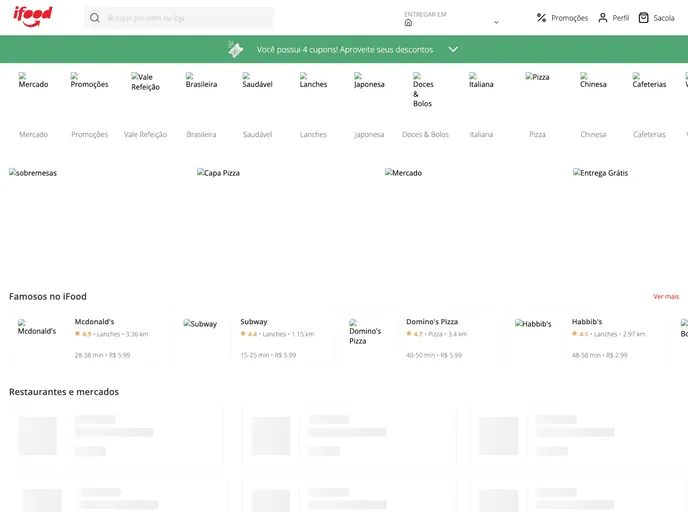Overview
iFood is an innovative front-end clone of the popular food delivery application, expertly crafted using Next.js. This project demonstrates a thorough understanding of modern web development principles while simulating the iFood interface, offering a seamless experience for users looking to order food online. The developer has implemented a fake API to display restaurant data, allowing for a realistic browsing experience. Additionally, this project emphasizes responsive design, ensuring that it looks great on all mobile devices.
One standout feature of this clone is its use of Server Side Rendering (SSR), which enhances performance and allows for faster initial loading times. This makes it an exciting option for anyone interested in both the culinary and tech worlds. Whether you’re a developer looking for a solid example of a food delivery app or a foodie wanting to explore a new platform, this iFood clone is worth checking out.
Features
- Responsive Design: The application is fully optimized for mobile devices, ensuring a smooth user experience on all screens.
- Server Side Rendering (SSR): This approach improves loading times and enhances user experience by rendering pages on the server.
- Fake API Integration: Utilizes a fake API to showcase restaurant data, making the experience realistic without needing a live backend.
- Modern Tech Stack: Built with Next.js, React, and TypeScript, it showcases contemporary web development practices.
- Redux Integration: Implements Redux for state management, allowing for efficient data handling and application flow.
- Easy Development Setup: The project provides clear instructions on how to clone and run, making it accessible for new developers wanting to experiment.
- Custom Styling: Styled-components are used for styling, which allows for dynamic, component-level styles, enhancing maintainability.
This project is not just a learning opportunity but also a great example of combining creativity with technical skills.




